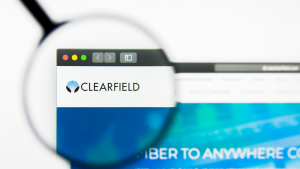Are you looking for stocks with massive upside potential? Who isn’t?
In recent weeks I’ve discussed on several occasions millionaire-maker long-term stocks. In particular, Monster Beverage (NASDAQ:MNST) comes to mind. It turned $10,000 into $21 million over 30 years.
To generate the highest return of any S&P 500 stock over the past 30 years, you would think obtaining these returns would involve significant risk. Not so for any Monster shareholders who’ve held for the past three decades.
In 1993, Monster went by the corporate name of Hansen Natural Corp. It sold juice under the Hansen Natural Soda brand. It had annual sales of $23.7 million and $650,000 in net income. It wasn’t reporting blowout profit margins, but it wasn’t losing millions annually like many biotech stocks.
The company’s big break came a decade later, in 2002, when it created Monster Energy. Over the next decade, sales would jump from $50 million to $1.7 billion; the rest is history.
To buy stocks for long-term wealth, you must consider the big picture and forget the quarterly results. That’s easier said than done, given that the average hold for stocks is just 10 months.
I’ve put my thinking cap on and have come up with three names from three sectors that could be millionaire-maker stocks. All three will have a market capitalization of less than $2 billion, annual revenue of less than $2 billion, and are profitable.
Wish me luck.
Arhaus (ARHS)

First up, representing the consumer discretionary sector, is Arhaus (NASDAQ:ARHS), an Ohio-based lifestyle brand and omnichannel retailer of premium home furnishings.
I honestly can’t remember how I first came across this company. Founded in 1986, the company scours the world, looking for manufacturers and artisans to produce sustainably sourced, lovingly made, built-to-last furniture.
The company took 35 years to become a public company, so maybe it doesn’t appear to be a fast-growing, millionaire-maker stock on the surface. However, nobody thought Monster was either.
Arhaus went public in November 2021 at $13. Yes, its shares are currently trading 13% below their IPO price. That’s not unusual for IPO stocks to trade below their offering price within 18 months of going public. I wrote about this phenomenon in 2011. Not much has changed in the decade since.
The company reported Q1 2023 results in May. Revenues grew nearly 24% year-over-year, to $305 million, with same-store sales growth of 21%. In terms of profits, it had an adjusted net income of $34 million, 113% higher than in Q1 2022.
For all of 2023, it expects revenue of at least $1.24 billion and adjusted net income of $102.5 million at the midpoint of its guidance.
For my money, Arhaus is a much better buy than Wayfair (NYSE:W).
Clearfield (CLFD)

Clearfield (NASDAQ:CLFD) supplies many of the guts required for telecom, cable, and broadband providers to get their fiber into homes and businesses across America. It calls itself “The Fiber to Anywhere Company.” It has 44 patents on its various products.
Fiber is the key to the internet getting into the computers of Americans everywhere. Unfortunately, according to an August 2022 article from CNBC, “only 43% of U.S. households have access to a fiber internet connection.”
That leaves plenty of growth ahead for Clearfield.
In the second quarter ended March 31, 2023, Clearfield’s Revenues grew 34% to 71.8 million. Of that growth, 13% was organic, while the remainder was from its $23-million acquisition of Nestor Cables, a Finnish provider of fiber optic cable solutions.
It finished the quarter with an order backlog of $107.6 million. Its backlog was down year-over-year due to the company filling orders more quickly and returning to pre-pandemic order volumes.
On the bottom line, It earned $10.4 million, 12% higher than a year earlier. On a per-share basis, earnings rose at a slower rate of 1.5% due to more shares outstanding.
The company’s balance sheet is very sound. It has long-term debt of just $2.2 million with $166 million in cash, short-term, and long-term investments. Most of the cash ($130 million) is from issuing stock last December for general corporate purposes.
I think it was a timely offer. The 1.38 million shares sold were at $100, about double where they trade today. That’s not great news if you were one of the buyers. However, the funds put the company in a powerful position for future growth.
With the company expected to benefit from the ongoing buildout of rural broadband, Clearfield’s business will continue to experience significant growth over the next 5-10 years.
It’s a diamond in the rough.
Gravity (GRVY)

Gravity (NASDAQ:GRVY) is a South Korean online and mobile video game developer. Founded in 2000, it went public on Nasdaq in 2005. It is best known for Ragnarok Online, a massively multiplayer online role-playing game (MMORPG) available in 91 markets. It accounted for 18.7% of Gravity’s 2022 revenue of $368 million.
However, while it started in online games, mobile games are where the growth is.
In the first quarter ended March 31, its mobile games accounted for 84% of its $126.5 million in revenue for the quarter. Its mobile games revenue grew 119.8% year-over-year, while its online games experienced just a 5.8% increase.
The strong performance compared to last year was due to healthy revenue increases from Ragnarok Origin in Taiwan, Hong Kong, and Macau and Ragnarok X: Next Generation in South Korea.
In terms of profitability, it earned $28.0 million in Q1 2023, 9.9% higher than Q4 2022 and 121.9% from a year ago. That’s a net margin of 22.1%, double those of Electronic Arts (NASDAQ:EA), one of the video game industry’s leading companies.
In my experience, investors shouldn’t read into any one quarter’s results when it comes to video games. Everything revolves around the timing of new product launches, etc. So, consistency isn’t commonplace in the industry.
Gravity trades at 1.25x sales, while EA is valued four-fold higher at 5.15x. While Gravity’s stock is up 76% YTD, it remains well below its December 2020 all-time high of $239.90.
If valued like EA, it would be trading over $300. Gravity is growth at a reasonable price.
On the date of publication, Will Ashworth did not have (either directly or indirectly) any positions in the securities mentioned in this article. The opinions expressed in this article are those of the writer, subject to the InvestorPlace.com Publishing Guidelines.
